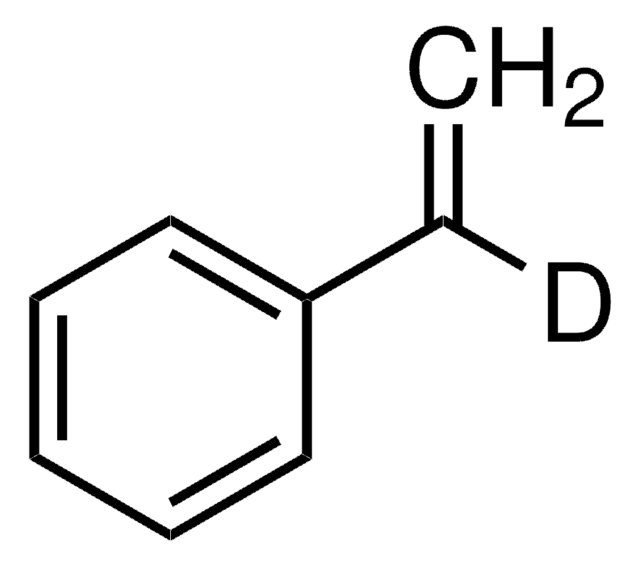901185
3,3′-Diethoxypropyl methacrylate
≥98.0%, contains ≤100 ppm MEHQ as inhibitor
Sinonimo/i:
3,3-Diethoxypropyl 2-methylprop-2-enoate, DEPMA, Diethoxypropyl methacrylate
About This Item
Prodotti consigliati
Saggio
≥98.0%
Forma fisica
liquid
contiene
≤100 ppm MEHQ as inhibitor
Colore
colorless to pale yellow
Condizioni di spedizione
wet ice
Temperatura di conservazione
−20°C
InChI
1S/C11H20O4/c1-5-13-10(14-6-2)7-8-15-11(12)9(3)4/h10H,3,5-8H2,1-2,4H3
CPARKAXEDHCHNX-UHFFFAOYSA-N
Applicazioni
Avvertenze
Warning
Indicazioni di pericolo
Consigli di prudenza
Classi di pericolo
Eye Irrit. 2 - Skin Irrit. 2
Codice della classe di stoccaggio
10 - Combustible liquids
Classe di pericolosità dell'acqua (WGK)
WGK 3
Punto d’infiammabilità (°F)
161.6 °F
Punto d’infiammabilità (°C)
72 °C
Certificati d'analisi (COA)
Cerca il Certificati d'analisi (COA) digitando il numero di lotto/batch corrispondente. I numeri di lotto o di batch sono stampati sull'etichetta dei prodotti dopo la parola ‘Lotto’ o ‘Batch’.
Possiedi già questo prodotto?
I documenti relativi ai prodotti acquistati recentemente sono disponibili nell’Archivio dei documenti.
Il team dei nostri ricercatori vanta grande esperienza in tutte le aree della ricerca quali Life Science, scienza dei materiali, sintesi chimica, cromatografia, discipline analitiche, ecc..
Contatta l'Assistenza Tecnica.









